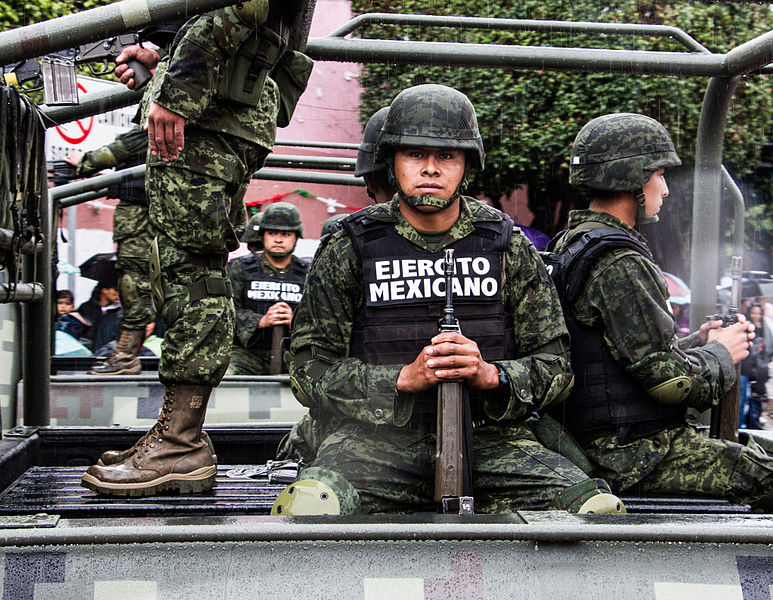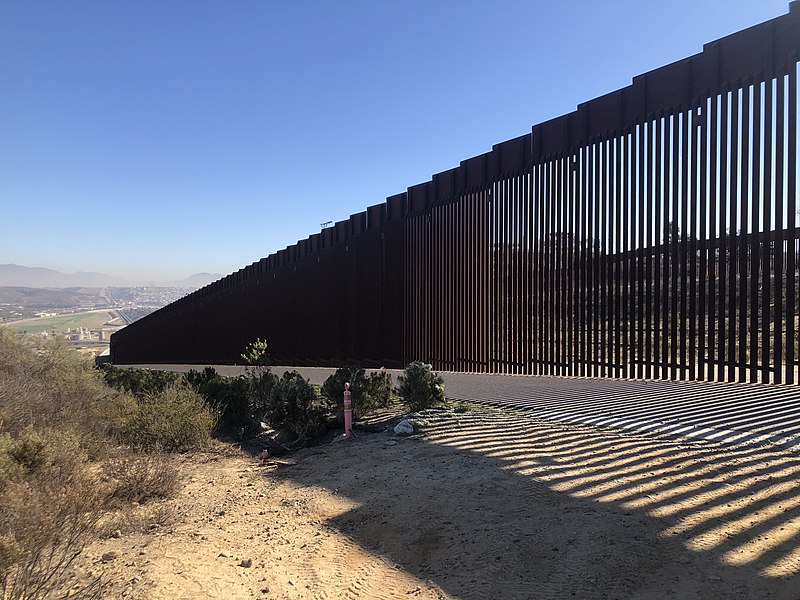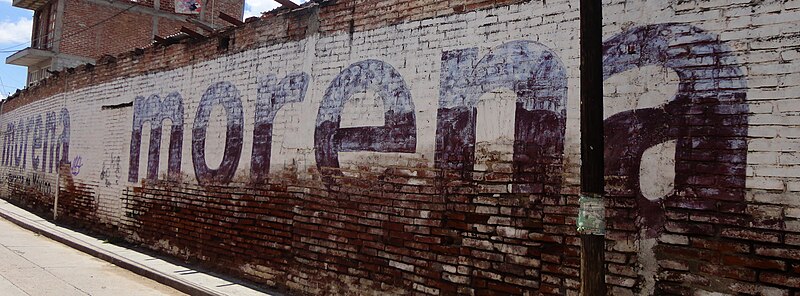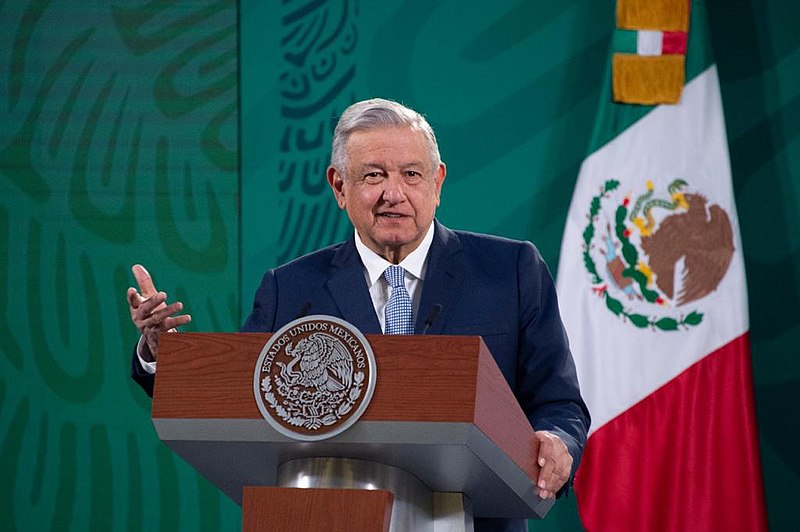The government of Andrés Manuel López Obrador (AMLO) is approaching its final year. His tenure has been fraught with complications at all levels: the COVID-19 pandemic, the economic crisis driven by it, unchecked violence, bashing by the right wing, etc. Nevertheless, polls indicate his support stands at over 65 percent. He enjoys massive support among the poorest. Against the odds, his personal backing will allow the party that he formed, Morena, to win the elections next year, notwithstanding something out of the ordinary.
The secret of AMLO’s success
Many who try to analyse what is happening in Mexico fail to understand why support for AMLO is so strong when we consider that the COVID-19 crisis of 2020 led to an 8 percent drop in GDP. Although the following years have seen some recovery, the economy still has not reached pre-pandemic levels.
The World Health Organisation (WHO) figure for excess deaths in Mexico stands at 626,000 dead between 2020 and 2021. The government’s own numbers put the figure at 333,000 as of April this year. On top of this, there is everything that has resulted from the pandemic, such as the 5 million students who have dropped out of school, soaring domestic violence in 2020, with a 100 percent increase in calls for help from women, and so on. Those who limit themselves to superficial analysis will look at this and be disoriented.
The first thing that should be explained is that the arrival of AMLO to government in 2018 opened an escape valve after 30 years of unprecedented attacks at all levels against the working class, women, and youth.
The previous governments, particularly those of Felipe Calderón (2006-2012) and Peña Nieto (2012-2018), conducted a one-sided civil war, in which narcos, colluding with the state apparatus, attacked women and young people, murdering and disappearing thousands of youth. Counter reforms introduced by those governments in labour, energy, education, etc. were intended to complete the privatisation of electricity and oil, and to sweep away labour rights.
All bourgeois institutions were extremely discredited. It can be said that the political situation shortly before the end of the Peña Nieto government, was one where the country was on the verge of a massive explosion of struggle on the streets. This would have taken on an insurrectionary character, like the uprisings in Ecuador and Chile in 2019.
We already had the precedent of the struggle against election fraud in 2006 and the Oaxaca commune of the same year. There were struggles, but they didn’t come together in a unified manner. As in 2006, AMLO has used his authority to contain the movement and prevent it from taking on a generalised character of a struggle to overthrow the government. Instead, he channelled all the energy of the mass movement into the electoral terrain.
In the absence of a revolutionary leadership to lead the movement towards a struggle for power, millions of workers, poor peasants and youth placed all their hopes and illusions in the victory of Lopez Obrador in the 2018 elections.
AMLO never said that his government was going to put an end to capitalism. From the beginning, he set his main task as the fight against corruption and ‘neoliberalism’. This is where he believes the problem of all society’s ills lies.
Under his liberal conception, this fight should be waged by strengthening state institutions, lowering onerous salaries of highly paid officials, and trying to avoid waste and theft from state coffers. Hence his emblematic struggles against fuel theft (huachicol), the reduction of salaries of high ranking state officials, the disappearance of secret funds, a fight to increase tax collection, against all companies and contracts that were harmful to state finances, etc.
At the same time, he used all his political capital, all the sympathy people felt for him, to reestablish the legitimacy of the discredited state institutions. For him, the most important thing was to show that there was no longer a bad guy in the presidency, and that from this place he could now lead a moral battle that would save and renew whoever placed themselves at his disposal.
Resting on the army
 The army is the backbone of a regime of oppression by the capitalist state, yet AMLO presents them as “the people in uniform” / Image: Tomascastelazo, Wikimedia Commons
The army is the backbone of a regime of oppression by the capitalist state, yet AMLO presents them as “the people in uniform” / Image: Tomascastelazo, Wikimedia Commons
Thus, seeing that the entire state apparatus was rotten, he set himself the goal of using the Armed Forces as his battering ram. It is not that there was no corruption there, but that discipline was maintained there and acts of corruption are well-kept secrets among the army’s top brass.
Everyone knows the role that the armed forces have played, particularly in the student movement of 1968, when they massacred hundreds of students in the Plaza de las Tres Culturas. Then there were the forced disappearances and the siege of the communities of Guerrero in their fight against the guerrillas in the so-called dirty war in the 1970s. And, more recently, they participated in the disappearance and murder of the 43 students from Ayotzinapa. The army is the backbone of a regime of oppression by the capitalist state, yet AMLO presents them as “the people in uniform”, as “loyal to the country” and as a “pillar in the fight against corruption”.
In order to ensure that the military leadership has a good relationship with his government, he has not hesitated to give them economic and political concessions at all levels. Their budget has been repeatedly increased every year. The National Guard has been created, and he is determined that it should remain under the administration of the army – as he says, to prevent it from being corrupted.
He has given the Army, for an indefinite period of time, the role of administration over the new Mayan Train project, of the hotels that are being built around the train route, of the new Felipe Angeles International Airport (AIFA). They are in charge of guarding customs, hospitals, roads, the new airports that are being built in the south of the country, etc.
The army and navy are the tools with which AMLO’s government has been fulfilling its strategic projects, in exchange for which it has given them economic and political power, the likes of which they have not had since the time of the revolution, when armies occupied the centre of the political stage.
Right now, thanks to AMLO's support, the armed forces (army, navy and national guard) enjoy a level of popular support exceeding 65 percent. This is despite the fact that disappearances and murders continue, as do femicides. The only crimes that have dropped substantially are robberies, kidnappings and car theft. Fundamentally, violence continues.
This also means that, although the government has made some progress in recognising the role of the state in the dirty war, there are very clear limits to how far it wants to go in uncovering the truth. Neither the army as an institution, nor any of its representatives can be touched.
We have seen this in the case of the Ayotzinapa students. Progress has been made in the investigation, and some of the political responsibility has begun to be clarified. But the central role played by the army in the disappearance of the 43 students, its links with the drug traffickers, etc. are outside the bounds of what is permitted, and there is clearly no intention to pull this thread. The expectations that the relatives of the students and those fighting for justice had in his government have been frustrated.
The state promoting capitalism and welfarism
Another of the central aspects of this administration is the way AMLO has used the state and its finances. On the one hand, it has given a series of subsidies to the poorest sectors of the country, mainly in the central and southern states. On the other, it has carried out his new strategic projects – the Mayan Train, the AIFA airport, and the Transisthmian Train that crosses from the Pacific Ocean to the Atlantic, and the industrial parks that will be opened along the railway line – all of which are aimed at attracting foreign investment to fill the country with ‘maquiladoras’ (i.e. sweatshops).
In the first case, AMLO has said in his morning press conferences that social programmes now reach 25 million families, another 5 million have a family member working for local or state governments. That is, 30 million families receive money from the state out of a total of 32 million families living in the country.
This welfare policy ranges from support for the elderly ($266 every two months); student scholarships from primary school to university level (which vary in amount depending on the level of studies); the youth programme Building the Future with which the government pays the salary ($361 a month) for a year to young people who are employed in registered companies to give them training; the Sowing Life programme, which has planted 6 million timber trees (paying $361 a month); supplying free fertiliser to farmers and buying their products at a subsidised prices; universal health care proposals, etc. In addition, it has decreed a 90 percent increase in the minimum wage.
All these programmes for the poorest sectors have had a tremendous effect in maintaining the president’s approval ratings. None of these programmes solve chronic poverty, nor the lack of study opportunities or well-paid jobs. They are all palliatives. But compared to what the right wing did in government, these policies are seen in a positive light and are supported by the people.
Using the laws at its disposal and state money, the government has proposed the above-mentioned infrastructure projects. At first, it was announced that private enterprise would be involved in all of them. However, there has been sabotage of these initiatives, and the government has used the army and the state budget to develop the infrastructure necessary for foreign companies to come to the country.
There is talk of 60 percent of the transport on the Mayan Train (which is supposed to be a tourist route) being freight. The Transisthmian Train is designed to compete with the Panama Canal and to be the new route for North American and Chinese goods. In addition, there will be a tax exemption for new capital investment in this region, just as there is on the northern border, where hundreds of large companies are now arriving under the relocation phenomenon known as near-shoring.
In 2022, foreign investment reached $35 billion, the highest figure since 2015. The outlook is that this sum will continue to increase in the coming years. Taking into account that interest rates have been rising almost in parallel with those in the US; right now the interest rate is 11.25 percent. This has prevented a massive outflow of capital and has helped the peso to appreciate against the dollar. Right now, one dollar is equivalent to 18 pesos on average, whereas under the last administration it was, on average, one dollar for 20 pesos.
The government also repeatedly calls on Mexican migrants in the US to send their remittances and has enabled various companies to charge cheaper remittance fees. The impact of this money has been substantial on overall finances. In 2022, remittance money was at a historic high of over $58 billion, a growth of 13.4 percent over 2021. AMLO has claimed that this money has a direct impact on 10 million families.
Capitalists takes money while beating the government
 Mexico’s subordination to its powerful neighbour to the north has been deepened, especially in migration policy / Image: Amyyfory Wikimedia Commons
Mexico’s subordination to its powerful neighbour to the north has been deepened, especially in migration policy / Image: Amyyfory Wikimedia Commons
The bourgeoisie does not see AMLO as one of their own. As such, it has treated him badly since the beginning of his administration. They regard his connection with the popular masses and his virulent attacks on what he calls “the power mafias” as potentially dangerous to themselves.
Businessmen like Claudio X. González, heir to the Kimberly Clark emporium, is leading and coordinating the opposition of the right-wing parties in order to present a united front at the 2024 elections. Big business is unable to see eye to eye with this government, and continues to stand in political opposition to AMLO. It now has to pay taxes – whereas previous governments returned taxes or exempted companies from paying them. It has taken away big contracts and reduced the amount of money in advertising campaigns, etc.
As such, big business are the organisers of the smear campaigns and all the attacks on the government, which have a strong component of class hatred. They reflect the way they despise the masses for their alleged low level of formal education, ignorance, etc. The executors and front men are the right-wing parties (PRI, PAN and PRD) who follow the instructions of the capitalists slavishly.
These campaigns are one of the main topics addressed in the ‘mañaneras’, the president's daily press conference. There, AMLO responds to them and exposes their lies. This has helped the government to capitalise on all these attacks in its own favour, and those close to AMLO close ranks in response and remain attentive to calls for mobilisation. The language AMLO uses in denouncing the right wing connects with a healthy class hatred among millions of workers and peasants who consider the president their president. However, AMLO stays within the narrow confines of bourgeois nationalism in his language, criticising ‘neoliberalism’, ‘corruption’, ‘mafias’, but never the capitalist system itself, nor imperialism.
Notwithstanding this back and forth with the right wing, AMLO’s government has facilitated and promoted the accumulation of capital by the national and international bourgeoisie. The figures do not lie and the government boasts of this.
“I can tell you that there is not a rich person in Mexico who has lost money during the time I have been governing, and I refer to the evidence. They have done very well,” he has stated. This statement is true. In 2022, the 50 largest fortunes with investments in Mexico grew by 30 percent compared to the previous year. Banking capital is one of the biggest beneficiaries. The 15 richest families in the country have increased their fortunes by 645 billion pesos. All this contrasts with the increase in poverty from 51.9 million to 55.7 million.
The government has stopped investing in infrastructure in order to encourage private investment: a classic ‘neoliberal’ policy, but which is only applied in certain sectors. In others, such as energy, the government is determined to win a majority and invests in buying up private companies so that state-owned companies have a majority in decision-making and production of electricity and oil.
Although we cannot go into detail in this article, in the international arena AMLO has followed a policy of gestures that distance him from US imperialism. At the same time, however, Mexico’s subordination to its powerful neighbour to the north has been deepened, especially in migration policy and with the signing of the new Free Trade Agreement.
Contradictions and perspectives
This government suffers from the classic contradictions of capitalism: poverty continues to increase, crime, labour exploitation, murders, drug trafficking, the lack of decent and well-paid jobs, etc. In addition, it suffers the contradictions of a country that shares borders with an imperialist country: the flow of migrants and their whole tragic journey, drug trafficking and human trafficking, the invasion of maquilas that plunder natural resources and devastate the environment. We must add to this the permanent sabotage of a part of the bourgeoisie that takes millions of dollars out of the market, that maintains a permanent campaign in the media against any government initiative.
The government’s welfare policy has had an impact on keeping mass mobilisations in check. This is not to say that class contradictions are not expressed. For example, in the trade unions there has been a 150 percent increase in strikes since the beginning of his six-year term, because the different reforms made by the government give the workers the possibility of expressing themselves. This happened in Matamoros in 2019, in different unions in the struggle for union democracy, etc. When these worker-employer conflicts break out, the government tries not to intervene, that is to say, to let the conflict break out and develop. In some cases, depending on the organisation of the battalions in the struggle, the working class wins. In others, it is crushed.
The strongest and most direct mobilisations have been in the field of student and women’s struggles. In both cases, it is the youth that maintain a fighting spirit. Although the pandemic was a period in which these two sectors were unable to take to the streets, once classes resumed, student mobilisations were not long in coming. On International Women’s Day this year, the mobilisation was massive and went on for hours.
 To the left of MORENA there is no mass left with a correct alternative / Image: Juan Carlos Fonseca Mata, Wikimedia Commons
To the left of MORENA there is no mass left with a correct alternative / Image: Juan Carlos Fonseca Mata, Wikimedia Commons
The right wing has cynically tried to intervene in these struggles and capitalise on them in order to beat the government. In general, the movement itself has been able to get rid of these intruders and carry forward the struggle for its just demands.
To the left of MORENA there is no mass left with a correct alternative. In next year’s elections, AMLO’s party will surely win the presidency regardless of the candidate, but that government will be diametrically different from the current one.
The majority tendencies within Morena point to a continuity of AMLO’s policies with Claudia Sheinbaum, or else a turn to the right and open negotiation with the bourgeoisie, as with Ebrard. These are the two strongest candidates.
But the situation is more complex. Many of the measures AMLO has taken make the Mexican economy increasingly dependent on the US economy. Everything points to a recession in the neighbouring country to the north, which will drag down the Mexican economy and complicate things even more for the next government. Some of the economic phenomena that have benefited AMLO (near-shoring, high energy prices, etc.) are about to come to an end. The contradictions and struggles in the trade union and youth sectors will intensify, and the possibilities for the intervention of the Marxists will be exceptional.
The problem is not ‘neoliberalism’, nor corruption. These are only symptoms of the crisis of capitalism itself. While rejecting the attacks of the reactionary right, we must patiently explain the limits of AMLO’s programme.
In order to substantially improve the living conditions of the masses, it is not enough to have one-off welfare plans, but rather to upend the balance of power in society. Only by putting the resources of society in the hands of the majority of the population (workers, peasants, working-class women, youth) will it be possible to guarantee a dignified life, housing, health, education and work for all. For that, it is necessary to expropriate the tiny number of capitalist parasites who control the means of production, and put them under the control of the working class, who produce all the wealth.
We are preparing for big events in the class struggle.

